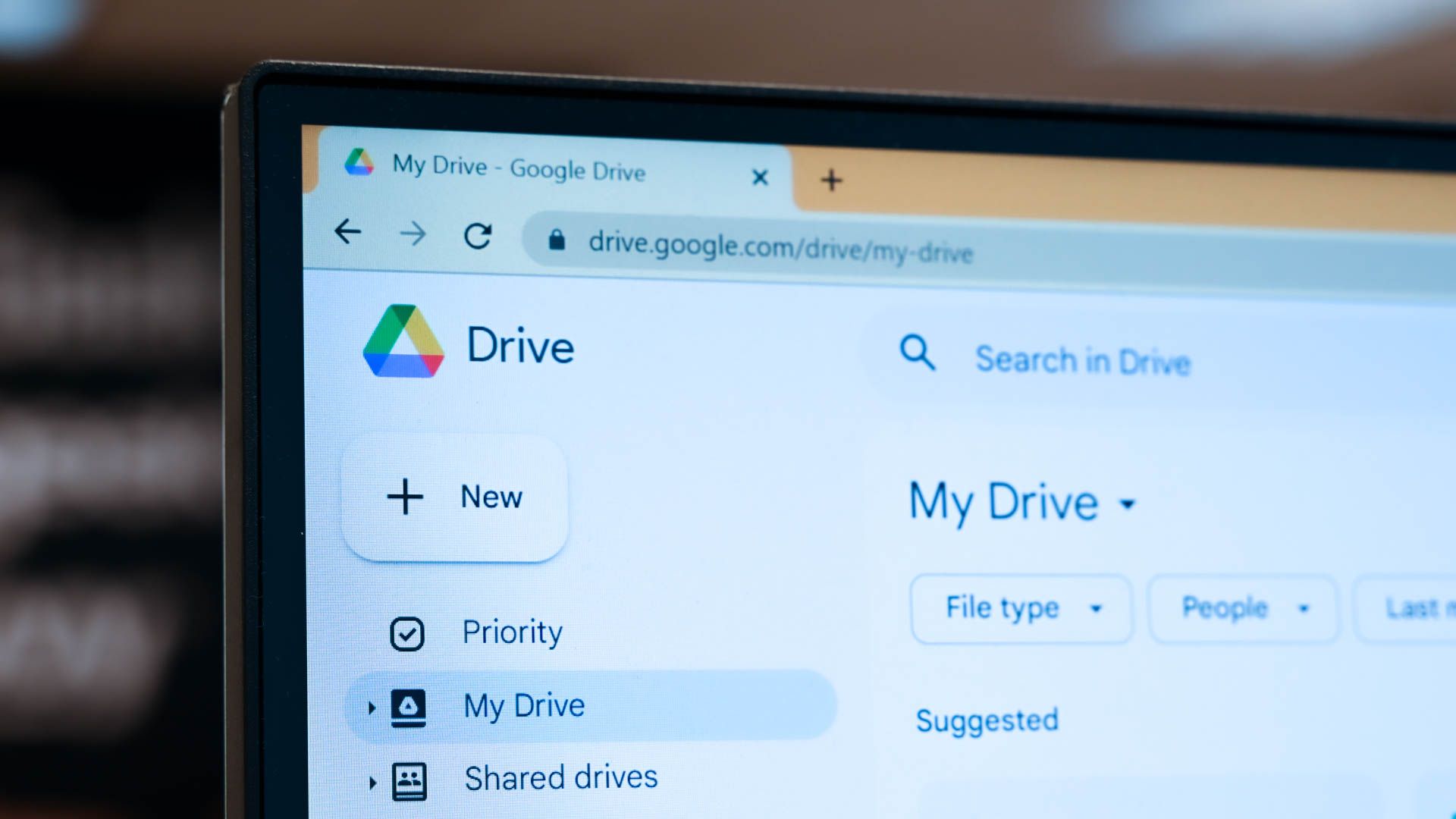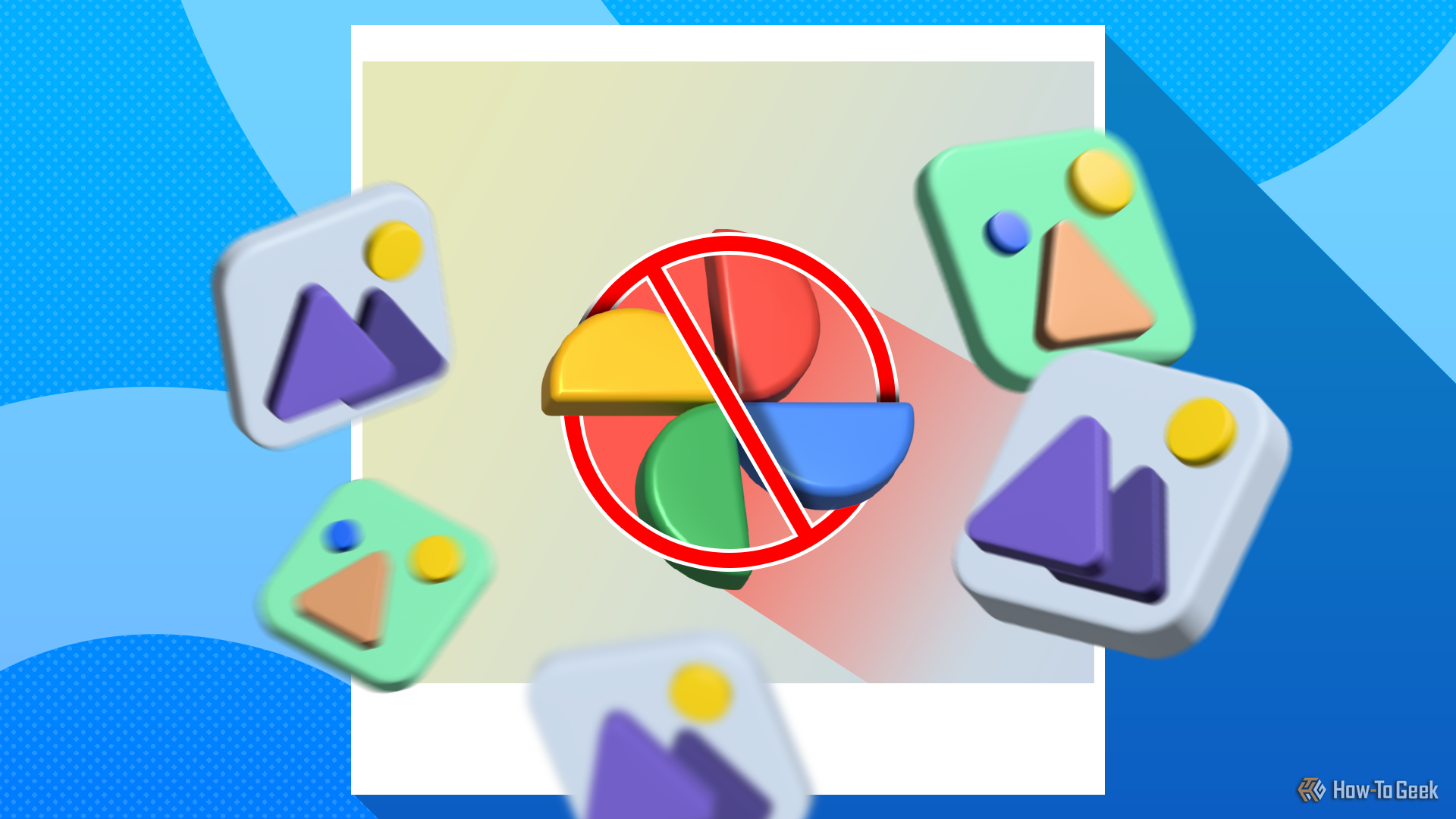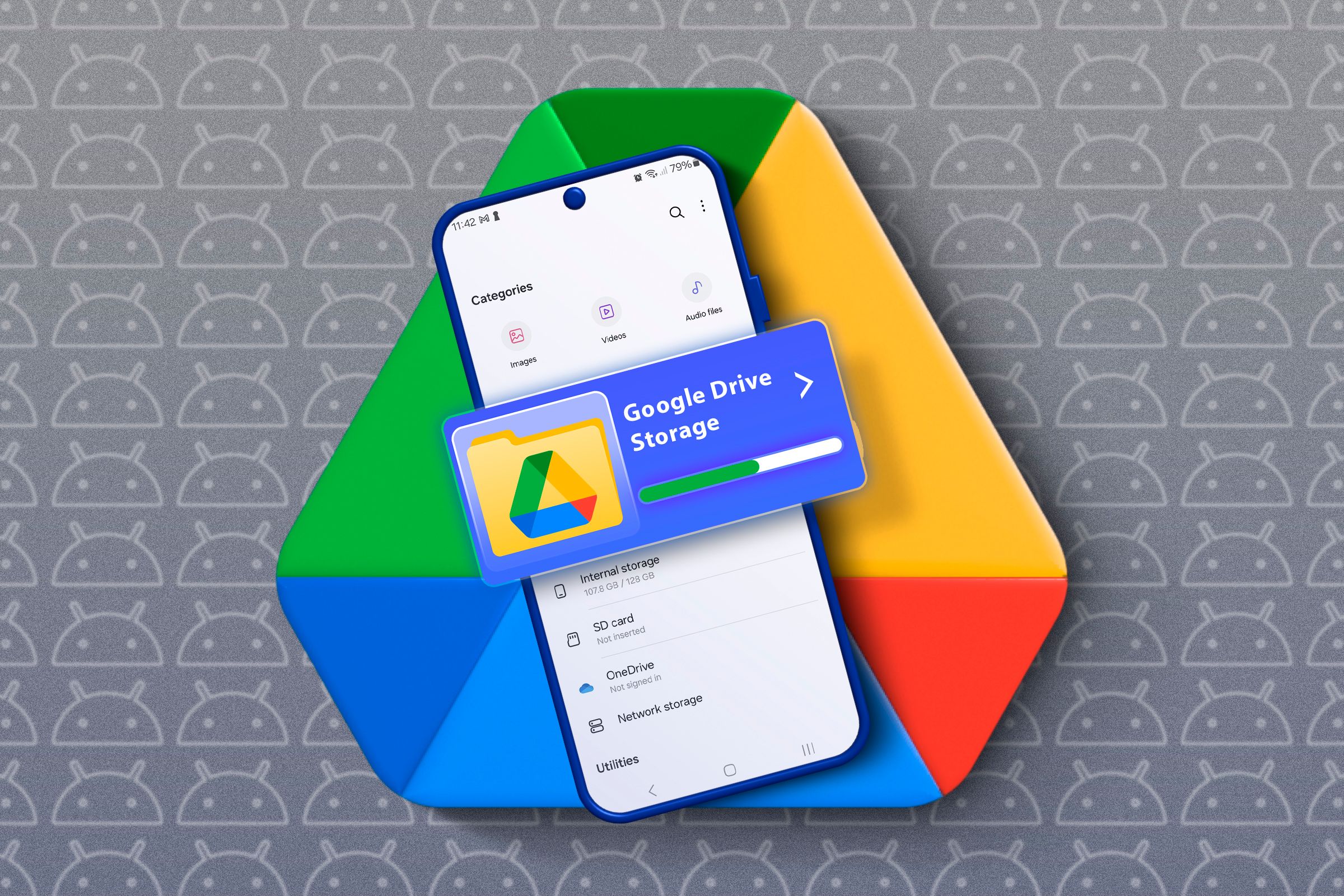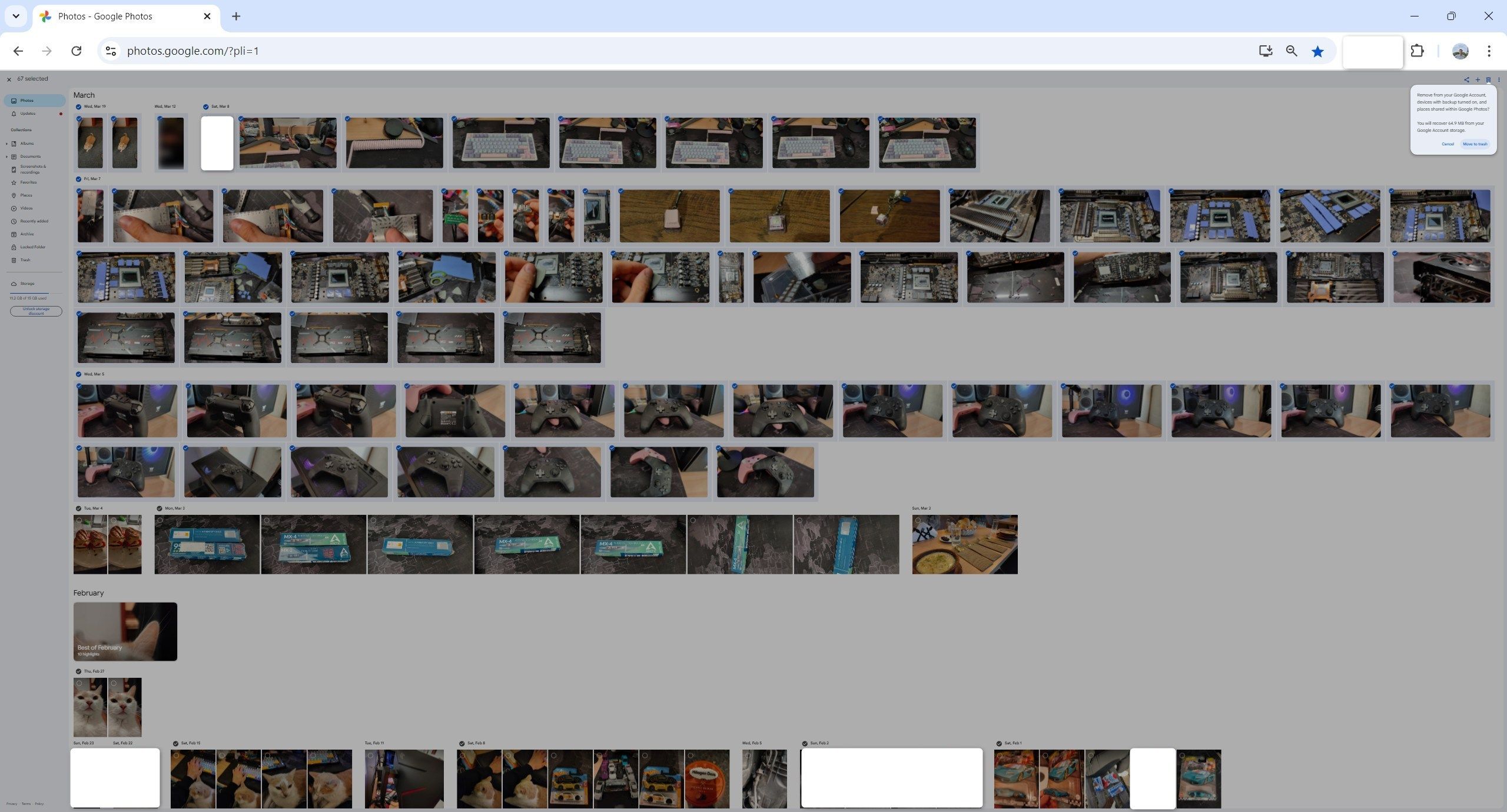Summary
- Filling up Google Photos storage caused sync issues with other Google services like Gmail and Drive.
- Cloud storage subscription plans add up over time and feel like a temporary fix rather than a real solution.
- Deleting photos in Google Photos is a slow, manual process with no easy “select all” option.
Back when I got my first Android smartphone in 2013 and learned about Google Photos, I thought it was the best thing ever. 15GB of free cloud backups for all my memories? Yes, please. However, over time, my favorite app turned into a nightmare, and that brings me to where I am now.
Why I Had to Delete My Google Photos
Back when I first turned on automatic photo backup on Google Photos, I had no idea how small 15GB of free storage actually was. My Samsung Galaxy Ace Plus had just 3GB of internal space, so 15GB of cloud storage seemed huge in comparison. In fact, I even enabled “Original” quality backups—that’s how confident I was in the free storage Google offered (though I later switched to the optimized setting).
Of course, 15GB wasn’t enough then, and it’s definitely not enough now. A single optimized photo takes up around half a MB, so you can theoretically only store 30,720 optimized pictures before hitting the limit. This fills up quickly when Google backs up every photo, screenshot, and video (which take up even more space), even though you had no intention of keeping them around.

Related
The Best Cloud Storage Services of 2025
Running out of storage space on your computer? Then it’s time to look at cloud storage.
The real issue is that those 15GB are actually shared across your entire Google account rather than just Photos. While I get that providing free cloud storage at such a massive scale costs Google a small fortune (even after deleting old accounts), it’s still barely enough for Gmail alone if you use it for work and regularly send large files.
Now, having my Google cloud storage full wouldn’t be such a big deal if it didn’t break something else. I could just turn backups off and periodically make room for more important files. But that wasn’t the case.
Once my cloud got close to full, Google services started running into sync issues. At around ~80%, email notifications became spotty, and at ~90%, I stopped receiving them entirely, despite my best efforts to fix it. I also could no longer upload photos to Drive, which is how I transfer photos from my phone to my PC. Eventually, I learned that freeing up the cloud fixes the issue, so I started purging Photos, and it worked.
With no reliable cloud backup anymore and having photos scattered across different storage solutions, I figured I might as well download and delete the whole thing. Having photo backups in the cloud was just actively causing me problems instead of solving anything. I’d rather use the limited space for things that actually matter—more specifically, my most essential work files, writing portfolio, and emails.
Sorry Google, but I’m Not Paying $1.99/Month
You’re probably thinking now, “Why not just pay $1.99/month for 100GB through Google One?” It’s not expensive at first, but it adds up. My Kingston DataTraveler Exodia 128GB flash drive is only $11.68. I could buy two of these sticks every year for the price of 100GB of cloud storage.
Although the cloud is infinitely portable and arguably more reliable (while paying) than a USB drive, I’d still rather have my money go towards an item that I’ll own permanently instead of being permanently subscribed to a service that will delete my files if I stop paying. Worse, unsubscribing causes the same sync issues I was already dealing with.
The worst part? Even 100GB wouldn’t actually solve anything. On top of being locked into yet another subscription, it still wouldn’t be enough for all my photos and essential files. Not to mention that this would just feed my reliance on cloud storage. As my storage needs grow, I’d inevitably end up upgrading to an even more expensive tier five years down the line.
Deleting Photos Shouldn’t Be This Hard (But Maybe That’s the Point)
Since I fundamentally refuse to be locked into a subscription plan for personal storage, no matter how cheap, it was time to delete photos to clear out Google Photos and stop sync issues once and for all. Unfortunately, Google doesn’t give you a “delete all” or “select all” button in Photos.
The best method I found was on desktop: zoom out the Google Photos webpage to around 33% to see more thumbnails, select a recent photo, scroll down, then hold Shift and select an older photo.
This selects everything in between, letting me delete thousands of photos in a single batch. Still, selecting too many at once can cause the interface to glitch, so I found it easier to delete in smaller chunks.
If you’re deleting photos on your phone, you can zoom out and select by month. While it’s far slower than on a PC, you only need to delete your entire Photos library once, so it’s worth the effort.
Even using the fastest way still took me a few tedious hours over several days. And I can’t help but feel that this friction is intentional—Google benefits from keeping your storage full to nudge you toward paying for more.
How I Back Up My Photos Now
I haven’t gone down the rabbit hole of clever backup solutions just yet. I don’t have a NAS, and I haven’t looked into building my own cloud solution, at least not yet. This is something that I plan to do in the future, though, as it would be a significantly cheaper and likely safer alternative compared to storing files in the cloud.
For now, I exported my Google Photos library and stored it locally on my PC, along with a backup copy on my USB flash drive. I also keep my most important photos on my phone. While none of these options are bulletproof, the odds of losing everything at once are low enough that I’m comfortable with the small risk.

Related
How I Ditched Google Photos and Built My Own Photo Server
Goodbye Google.
It’s also worth noting that while original-quality photos take up significantly more space, they look far better than the heavily compressed versions Google Photos creates. I’d rather compress the photos myself using a lossless compression tool, as I don’t mind occasionally buying more storage.
A traditional hard drive like the 2TB Seagate BarraCuda will pay for itself over time, especially compared to Google’s limited and recurring subscription plans. Even if I buy two of them and run them in RAID 1 to serve as a real-time backup, it’s still money well spent.
Deleting tens of thousands of photos from Google Photos took a long time, but it was worth it. Having backups “just in case” is nice, but I’d rather rely on my own hardware. It’s more private, affordable, and, most importantly, I won’t get locked into a lifetime subscription that wouldn’t meet my needs five years from now. Plus, now that my cloud storage isn’t maxed out, Gmail and Drive sync properly again.






:max_bytes(150000):strip_icc()/GettyImages-2152164861-74211e0c48c441c29d1476d29fea732a.jpg?w=1174&resize=1174,862&ssl=1)

:max_bytes(150000):strip_icc()/emiliano-cicero-lq87UxGSiEQ-unsplash-a1f8123e0d3d4cf785360e5ac570ba47.jpg?w=1174&resize=1174,862&ssl=1)
Leave a Comment
Your email address will not be published. Required fields are marked *